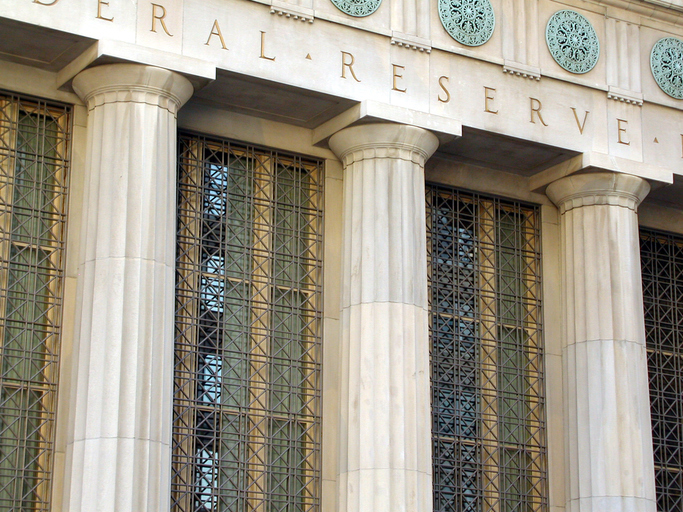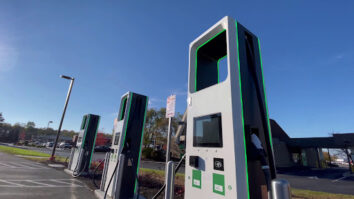Update as of November 4, 2020:
As of October 30th, the Main Street Lending Program (MSLP) has provided close to $4 billion by way of nearly 400 loans, according to the Federal Reserve Board (the Board). The Board also released updated program terms, which increase program access for both for-profit businesses and nonprofit organizations.
Notable changes include a decrease in associated fees and a reduction to the minimum loan size (from $250,000 to $100,000) for 3 of the MSLP loan facilities. The Board also issued an updated For-Profit FAQ Document, as well as a Nonprofit Organization FAQ Document. These documents now show, when determining the maximum MSLP loan size, Paycheck Protection Program (PPP) borrowers of $2 million or less may exclude that amount from “existing outstanding and undrawn available debt,” as long as certain requirements are met. These FAQ documents also reflect updates made in September, which targeted lenders and clarified supervisory and underwriting expectations.
Program updates and documents for borrowers and lenders may be found on the Federal Reserve website. We have included links to the updated loan facility term documents below.
Nonprofit Organization Expanded Loan Facility Terms (effective 10/30/2020)
Nonprofit Organization New Loan Facility Terms (effective 10/30/2020)
Main Street Expanded Loan Facility Terms (effective 10/30/2020)
Main Street New Loan Facility Terms (effective 10/30/2020)
Main Street Priority Loan Facility Terms (effective 10/30/2020)
Contact us if you have questions, and visit our COVID-19 Financial Resource and Tax Center for additional information on related matters.
Update as of July 20, 2020:
On Friday, July 17th, the Federal Reserve Board (the Board) released their latest modifications to the Main Street Lending Program (MSLP), which will broaden access to credit through the program for nonprofit organizations.
The MSLP was established in April to support the operations and payroll needs of small- and mid-sized businesses that were financially sound before the onset of the COVID-19 pandemic. The Treasury has backed the program with $75 billion in CARES Act funding.
The Board announced their proposal to expand the program to include nonprofit organizations in mid-June. After careful consideration of public comments, the Board has approved two new loan facilities to provide support to nonprofits that are tax-exempt, as described in section 501(c)(3) or 501(c)(19) of the Internal Revenue Code, and that were in sound financial condition prior to COVID-19: the Nonprofit Organization Expanded Loan Facility (NOELF) and the Nonprofit Organization New Loan Facility (NONLF). Facility terms may be accessed below.
Nonprofit Organization Expanded Loan Facility Terms
Nonprofit Organization New Loan Facility Terms
“Nonprofits provide vital services across the country and employ millions of Americans. We have listened carefully and adapted our approach so that we can best support them in carrying out their vital mission during this extraordinary time,” said Federal Reserve Chair Jerome H. Powell.
Loan Facility Term Changes
A number of the initially proposed terms have been adjusted to expand program eligibility. The minimum employment threshold of 50 employees has been lowered to 10 employees. Total non-donation revenues, previously set to be equal to or greater than 70% of expenses for the period from 2017 through 2019, have been adjusted to 60% of expenses for the proposed period. The 2019 operating margin of 5% or more has been lowered to 2% or more, and the current days cash on hand has been reduced from 90 days to 60 days. The current debt repayment capacity (ratio of cash, investments, and other resources to outstanding debt and certain other liabilities) has been set at greater than 55%, in contrast to the proposed 65%.
General Loan Terms
For the NOELF and the NONLF, the loan term is set at five years, the organization must have been in operation for at least 5 years, and an endowment cap has been set at $3 billion. The interest rate is set at LIBOR + 3% and deferred for one year. Principal is deferred for two years, with payments occurring in years 3-5 at 15%, 15%, and 70%, respectively. The minimum loan amount is $250,000. The maximum loan amounts differ by lending facility. The NOELF maximum loan amount has been set at the lesser of $300 million, or the borrower’s average 2019 quarterly revenue. The NONLF maximum loan amount has been set at the lesser of $35 million, or the borrower’s average 2019 quarterly revenue.
As of July 20th, the latest information for nonprofits has not been published within their Frequently Asked Questions document; however, the Federal Reserve regularly updates this document, and additional information is expected soon. Other program news, updated lender and borrower documents, and additional resources are also expected to be available soon on the Federal Reserve website.
Update as of June 17, 2020:
On Monday, June 15th, the Federal Reserve Bank of Boston launched the Main Street Lending Program (MSLP), and lender registration is now open.
The Federal Reserve Board updated the program terms for each existing lending facility on June 8th. The term changes affecting all facilities included raising the maximum loan limit, adjusting the principal repayment schedule to begin after two years, and extending the loan term from four to five years. For the MSNLF and MSPLF, changes also included a lower loan minimum, at $250,000. And for the MSPLF, the risk retention is 5%, now in line with the other facilities. Links to the updated program facility terms may be found below.
Main Street New Loan Facility Terms, Updated & Effective June 8, 2020
Main Street Priority Loan Facility Terms, Updated & Effective June 8, 2020
Main Street Expanded Loan Facility Terms, Updated & Effective June 8, 2020
On June 15th, the Federal Reserve announced a proposed program expansion that would offer non-forgivable loans, ranging from $250,000 to $300 million, to nonprofit organizations with 50 to 15,000 employees.
“Nonprofits provide vital services across the country and we are working to help them through this difficult time” said Federal Reserve Chair Jerome H. Powell.
The proposed expansion includes the addition of two lending facilities: the Nonprofit Organization New Loan Facility (NONLF) and the Nonprofit Organization Expanded Loan Facility (NOELF). The Federal Reserve is accepting public comments until Monday, June 22, 2020. The drafted terms for each proposed facility may be found below.
Draft – Nonprofit Organization New Loan Facility Terms
Draft – Nonprofit Organization Expanded Loan Facility Terms
The Federal Reserve has also published an updated Frequently Asked Questions document for the program. The Loan Document Checklist, Appendix A in the FAQ document, contains a chart comparing the terms of each existing loan facility. Other program news, updated lender and borrower documents, and additional resources may be found on the Federal Reserve website.
Update as of May 29, 2020:
The Federal Reserve Bank of Boston has issued additional information for the Main Street Lending Program (MSLP), including the legal forms and agreements for eligible borrowers and eligible lenders to participate in the program through one of the three program facilities: the Main Street New Loan Facility (MSNLF), the Main Street Priority Loan Facility (MSPLF), and the Main Street Expanded Loan Facility (MSELF).
The release contains a slew of information, legal documents, and extensive instructions. The majority of the forms and instructions, however, pertain to program lenders. We want to take a look at areas where borrowers should focus.
The Federal Reserve has published an expanded and updated Frequently Asked Questions document for the program. Below are some highlights of the changes:
While the original program made it clear MSLP loans are neither partially nor fully forgivable, the answer to question A.10 in the FAQ document expands on loan reduction in stating “In the event of restructurings or workouts, the Main Street SPV [the new program established by the Federal Reserve of Boston for this lending program] may agree to reductions in interest (including capitalized interest), extended amortization schedules and maturities, and higher priority “priming” loans.”
The answer to FAQ question C.4 affirms borrower’s may use loan proceeds to refinance existing loans through other lenders at the time of the MSLP loan origination. Following origination, borrower’s must “refrain from repaying the principal balance of, or paying any interest on, any debt other than the MSPLF Loan, unless the debt or interest payment is mandatory and due.”
Section D of the FAQ document has been expanded significantly to clarify the nuances of MSELF upsized tranches, and Section E includes more detailed eligibility criteria for operations outside the U.S., foreign subsidiaries, and guidelines and restrictions on affiliates participating in loan programs simultaneously.
Section H, among other details, covers the program definition of “mandatory and due,” with regard to terms that state borrows must refrain from paying other debt and interest payments, unless “mandatory and due.” This section confirms that most other debt predating the Maine Street loan, executed before April 24, 2020, should continue to be paid.
The FAQ document also includes Appendices A, B, & C: Loan Document Checklist, Required Covenants in Loan Documentation, and Required Financial Reporting, respectively. The Loan Document Checklist is a table comparing the terms of each of the three loan types. The Covenants’ Appendix details out the standard covenants under the program, although your lender may choose to include their own covenants, as long as they are substantially the same. Appendix C details the annual and quarterly (differing by loan type) reporting requirements, which will primarily come from your annual/quarterly financial statements, although covenant calculations and related covenant certifications will also be required.
As a borrower, you will be required to complete the Borrower Certifications and Covenants document for the applicable loan facility. The CEO and CFO, or officers performing similar functions, must certify and agree to the loan terms by signing the respective facility Borrower Certifications and Covenants document. A link to each borrower document may be found below.
MSNLF Borrower Certifications and Covenants
MSELF Borrower Certifications and Covenants
MSPLF Borrower Certifications and Covenants
The loan application and actual loan documents will be prepared through your lender. Your lender will subsequently submit the signed Borrower Certifications and Covenants document with all required supporting documentation to the Main Street SPV.
The general terms of loans through each facility have not changed since the loan facility term documents were issued on April 30, 2020. The original article below summarizes those terms, and the links below provide full details on the terms of loans through each respective facility.
Main Street New Loan Facility Terms
Main Street Expanded Loan Facility Terms
Main Street Priority Loan Facility Terms
To date, the program infrastructure is still in the works. The Federal Reserve Bank of Boston updates their website as new information becomes available. If you are interested in this program, contact your preferred bank to inquire if they are an eligible lender. The criteria for lender eligibility may also be found on the term sheets above.
Full details, including links to all lender and borrower documents and instructions, may be found on the program page of the Federal Reserve Bank of Boston’s website. They direct interested parties to submit questions via email to mslp@bos.frb.org. Additionally, you can sign up for their program alerts here.
This article was originally published on May 2, 2020:
On April 9th, the Federal Reserve introduced the Main Street Lending Program (MSLP), a new lending initiative that supports not only small businesses, but mid-sized businesses as well. This program was established to assist businesses that were financially sound before the onset of the COVID-19 pandemic with maintaining operations and payroll. The U.S. Treasury is backing the program with $75 billion in funding received through the CARES Act.
Effective April 30, 2020, new lending support is available for the program through the addition of a third loan option, allowing for the full program to provide up to $600 billion. The minimum loan size for certain loans has also been lowered, and borrower eligibility has been expanded. The program infrastructure is still in the works. If you are interested in this program, contact your preferred bank to inquire if they are an eligible lender. The Federal Reserve Bank of Boston will update their site for new information, as the program becomes operational.
While the MSLP offers the opportunity for a single loan for eligible businesses, the program now operates through three facilities: the Main Street New Loan Facility (MSNLF), the Main Street Priority Loan Facility (MSPLF), and the Main Street Expanded Loan Facility (MSELF). The MSNLF and MSPLF are facilities in place for origination of new loans, whereas the MSELF is available for “upsizing” existing loans.
The Federal Reserve Bank of Boston will purchase 85% of each MSPLF loan, leaving 15% with the lender for risk retention, 95% of each MSNLF loan, with 5% left with the lender, and 95% of the upsized portion of each MSELF loan, with 5% left with the lender. Federal Reserve purchases will occur through September 30, 2020.
Loans through this program can be restrictive, so understanding the standard requirements, commitments, and terms is paramount. Also of note, your name, loan type, loan amount, interest rate, and types and amounts of collateral pledged will be made public should you borrow through the MSLP.
Loan Standards Across MSLP Facilities
Borrower eligibility – Your business must have been created or organized in the U.S., or under U.S. laws, with most of your operations and employees within the U.S. Additionally, your business must have been operational prior to March 13, 2020. Originally, the program set eligibility standards at 10,000 or less employees or $2.5 billion or less in annual revenue for 2019. The recent expansion of the program, however, allows businesses with 15,000 or less employees or annual revenue of $5 billion or less to be eligible for a loan. To determine eligibility based on employee size or revenue, companies must aggregate the employees/revenue from affiliated entities.
Businesses may be eligible for the MSLP if they have already taken out a Paycheck Protection Program (PPP) loan; however, no loans will be issued to businesses with other funding under the CARES Act, such as funding for airlines, cargo carriers, and national security loans.
Certain loan terms – Loans from all facilities are not eligible for forgiveness, will have a four-year maturity, and principal and interest payments will both be deferred for a period of one year, with unpaid interest capitalized. Each loan has an adjustable rate of LIBOR (1 or 3 month) + 300 basis points, and may be prepaid without penalty.
Commitments – Borrowers must make reasonable effort to maintain payroll and employees while the loan is outstanding, and they must make certain commitments before receiving a loan through any MSLP facility. These include refraining from repayment on principal balances and interest on certain other debt until the MSLP loan is repaid in full, and not seeking to cancel or reduce committed lines of credit through your MSLP lender or other lenders. You must certify that, to the best of your knowledge, your business can meet financial obligations for at least 90 days and does not expect to file for bankruptcy, and commit to following certain direct loan program restrictions set forth in the CARES Act legislation. A restriction on dividends during the loan term and 12 months after the loan is repaid. However, in contrast with the original CARES Act legislation, the MSLP allows eligible S corporation or pass-through entities to make tax distributions to cover tax on the business’s earnings.
Term Differences Across MSLP Facilities
Principal amortization – For MSNLF loans, principal amortization of 33.33% at the end of the second year, 33.33% at the end of the third year, and 33.33% at maturity, which is the end of the fourth year.
For both MSPLF and MSELF loans, principal amortization of 15% at the end of the second year, 15% at the end of the third year, and a balloon payment of 70% at maturity, which is the end of the fourth year.
Minimum loan size – For MSNLF loans, the minimum loan size is $500,000, as opposed to the originally stated $1 million. For MSPLF loans, the minimum loan size is also $500,000. The minimum loan size for the MSELF is $10 million.
Maximum loan size – For MSNLF loans, the maximum amount is the lesser of $25 million or an amount that, when added to your existing outstanding and undrawn available debt, does not exceed FOUR times your adjusted earnings before interest, taxes, depreciation, and amortization (EBITDA) for 2019.
For MSPLF loans, the maximum amount is the lesser of $25 million or an amount that, when added to your existing outstanding and undrawn available debt, does not exceed SIX times your adjusted EBITDA for 2019.
And for MSELF loans, the maximum is the lesser of $200 million, 35% of your existing outstanding and undrawn available debt that is equal in priority with the loan and equivalent in secured status, or an amount that, when added to your existing outstanding and undrawn available debt, does not exceed SIX times your adjusted EBITDA for 2019.
Loan Fees – For MSNLF and MSPLF loans, the borrower must pay the lender an origination fee when the loan is originated of up to 100 basis points of the principal amount of the upsized portion of the loan. Lenders for these facilities may also require borrowers to pay an additional transaction fee of 100 basis points of the principal of the loan at origination.
For MSELF loans, the borrower must pay an origination fee when the loan is upsized of up to 75 basis points of the principal amount of the upsized portion of the loan. Lenders for this facility may also require borrowers to pay an additional transaction fee of 75 basis points of the principal of the loan at the time it is upsized.
Contact ARB
ARB is dedicated to updating our clients and community as the legislative implications of the COVID-19 pandemic continue to unfold. Contact us if you have questions on the MSLP, or visit our COVID-19 Financial Resource and Tax Center for additional information on related matters.
by Holly Ferguson, CPA





